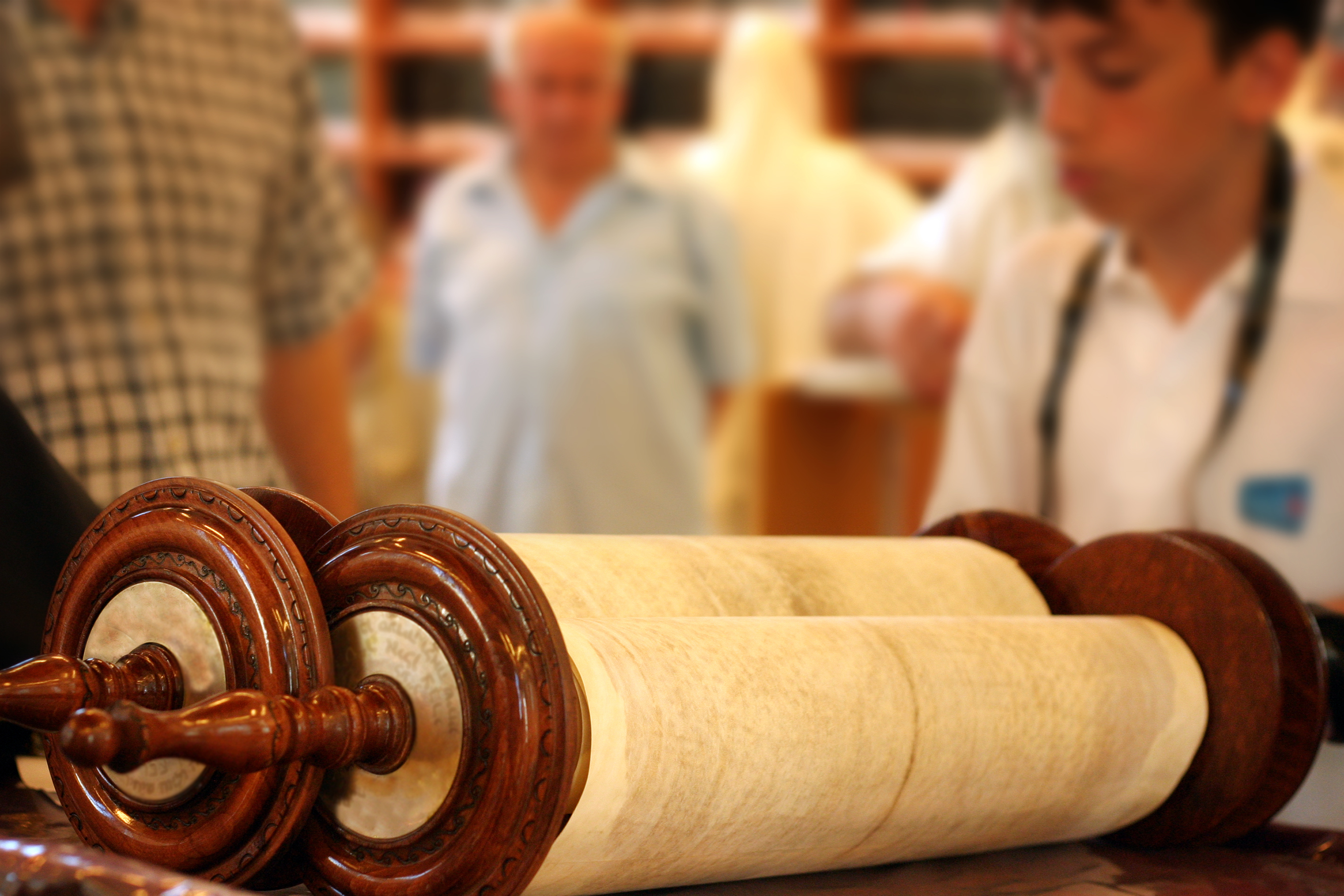For Jews, there is nothing more sacred than the Torah scroll. It contains yards of parchment stitched together and bound to two wooden dowels. Upon the parchment, a scribe calligraphies the words of the Bible’s first five books: Genesis, Exodus, Leviticus, Numbers and Deuteronomy. Using a feather pen, most scribes take approximately one year to complete a Torah scroll. Some scribes are better artists than others and their highly stylized letters are beautiful works of art.
Few see their work up close. Their artistry is only evident when the holy scroll is unfurled. In reality it is an art intended to be read, or, to be more exact, chanted. It is meant to be studied. And yet, for a brief moment following the Torah reading at services, the scroll is lifted so that all might see its columns of verses. People can glimpse the few letters upon which the scribe adorns decorative crowns. And then the scroll is covered and dressed. It is returned to the Ark.
The artwork remains hidden. The artist’s name remains a mystery.
Everything used in the scroll’s production must come from the natural world. The parchment, wood and ink must be rendered from what God created. Even the quill pen is made from a turkey feather. Making the ink is a particularly difficult and exhaustive task.
One formula for the manufacture of this ink requires first that the nut, which a female gall wasp produces when she lays her eggs in an oak tree, be ground and cooked. Added to this mixture is the gum from an acacia tree and copper sulfate. This is then slowly cooked for one year. The ink is very prized and a small bottle is terribly expensive. It can last for 1,000 years once the scribe calligraphies these black letters to the parchment.
That is the black inscribed on a Torah scroll. According to tradition, the white spaces between the black letters are equally important. It is within them that we see ourselves. The mystics teach that they were written with white fire by God’s hand.
These days communities and countries appear like delicate Torah scrolls, stitched together with fraying threads. Like a Torah, it requires many different people to fashion a community or country. There are, and will always be, people who do nothing–like the white spaces. And yet, we must remind ourselves, the black letters are only revealed when held against the white spaces. Only then can the fire dance.
There are people who will say and do painful and hurtful things–like the wasp. Know this. Such things can one day turn into a gallnut that, by our labor, can produce something holy. And then there are those who must be prepared to take the stuff of community and country and work on it for a year and longer. They must dedicate (and rededicate) themselves to the painstaking, and often times forgotten, task of cooking the ink, of taking the seemingly insignificant, and ugly, and turn it into something holy.
And yet, that is the very task we must assume each and every day.
What I have learned in my many years as a rabbi is that the work of creating community, and of bettering country, like the art of a Torah scroll, requires unique materials and hard work. But that is the only way we can build community. That is the only way we can rebuild country. That is the only way we can transform the ordinary, and even painful and hurtful, into something holy.
Don’t let anyone tell you it won’t take effort. We will always have a lot of work to do on the gallnut. Don’t let anyone tell you it might not be painful. Most importantly, don’t let anyone tell you that we cannot create something holy that will last 1,000 years.
Always remember, all of that hard work and artistry is only revealed for a few brief moments. And even then, no one knows the name of the artist who labored to create this holy scroll.
Rabbi Steven Heneson Moskowitz is the rabbi of Congregation L’Dor V’Dor, a vibrant synagogue on Long Island’s North Shore. His writing appears in a variety of publications including Reform Judaism and The Times of Israel. He also blogs at rabbimoskowitz.com

